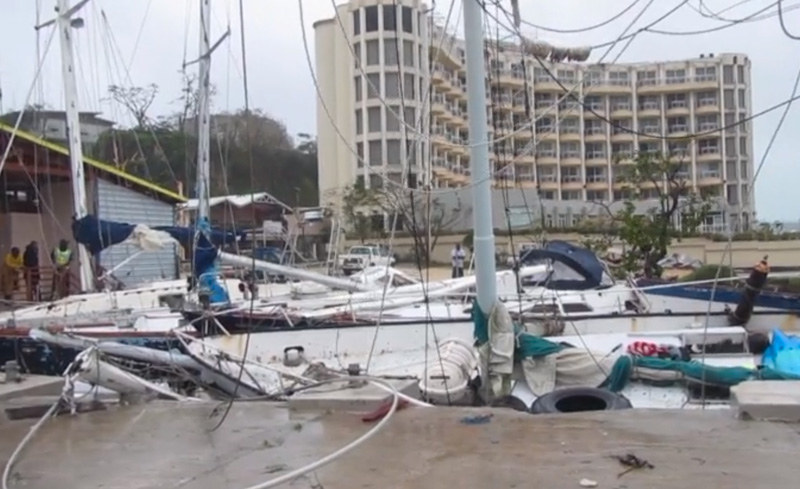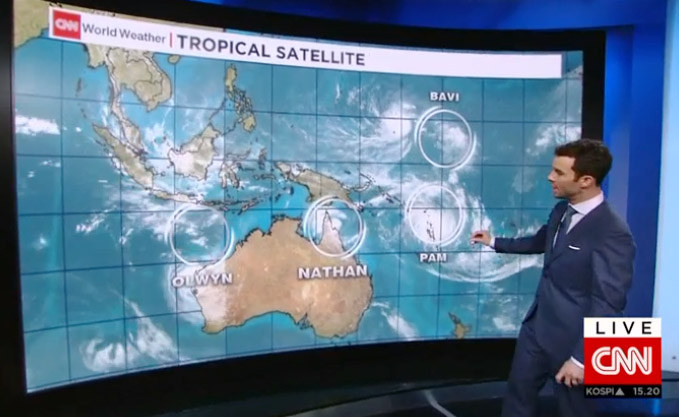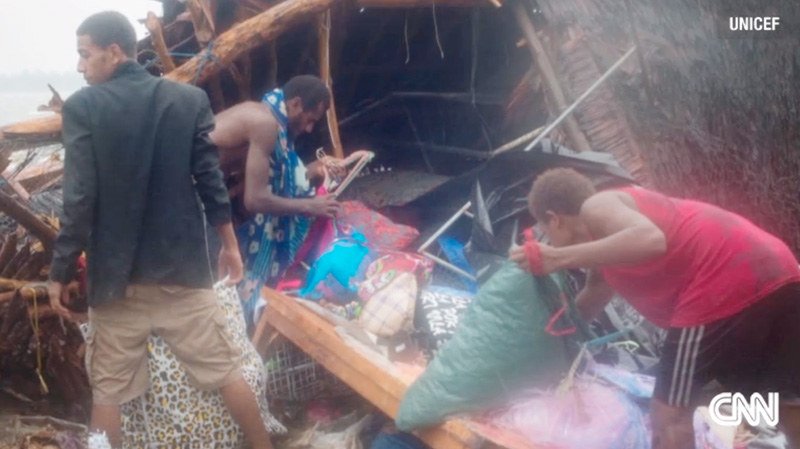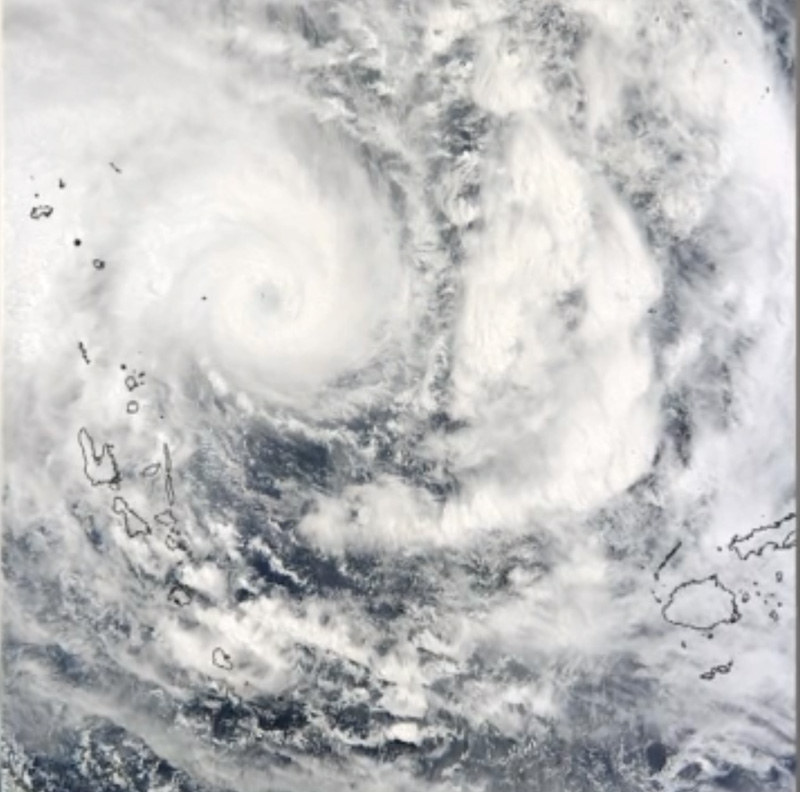
Four Storms Rock South Pacific

The simultaneous development of four powerful tropical storms late last week must have left some meteorologists thinking they’d stumbled into a Hollywood doomsday thriller — or were having their worst nightmare. As the graphic below shows, three storms — Pam, Nathan and Bavi — raged over waters northeast of Australia, while a fourth — Olwyn — steamed along the continent’s northwest quadrant.
The worst damage came from Tropical Cyclone Pam, which steamrolled through Vanuatu’s capital, Port Vila, Friday night (local time) with sustained winds of 155 mph (134 knots) and gusts up to 200 mph (173 knots), leaving a path of horrible destruction before advancing toward less developed isles of the 83-island archipelago. Officials say 90% of all buildings in the capital were damaged or destroyed. In outlying areas traditional dwellings made of sticks and thatch were, of course, completely demolished. We’ve seen no reports of damage to visiting yachts, but photos reveal that many were damaged.

As multiple aid organizations are now arriving to give medical aid and assist with cleanup, the death toll is expected to rise substantially from the few confirmed so far. Communications, however, are still very sketchy as the capital has no electricity — or running water.
The island of Tanna, lying south of Port Vila, reportedly took more of a direct hit than the capital. On site there, Tom Perry of Care International explained, "Most people in outer islands live completely rural lives. They grow what they eat, and this will have wiped out their entire food stocks. People live in very simple accommodation, huts made of timber and palm leaves. There’s no way buildings like that are going to withstand a Category 5 cyclone."

Although we have seen no detailed reports on more northerly islands of the chain, such as Espiritu Santo, which is a popular cruiser stop, prediction models showed the storm veering well to the east of Espiritu and its neighbors.
Ironically, when the cyclone hit, Vanuatu’s President Baldwin Lonsdale was at a conference in Japan on disaster reduction. He believes that strong cyclones such as Pam are directly linked to climate change. "We see the level of sea rise… The cyclone seasons, the warm, the rain, all this is affected… climate change is contributing to this."

Meanwhile, Bavi has weakened substantially with 40-knot winds as it moves toward the Philippines. Olwyn hit the Aussie coast Friday with max winds of 62 mph, and since late last week Nathan has been bouncing along the coast of northeast Queensland, causing extensive flooding and wind-related damage. As it moves southwest over the Coral Sea early this week, it is expected to gain strength, with Category 1 winds predicted by the time it hits Cairns and Townsville Thursday or Friday. Both areas, of course, are renowned for their boating and diving infrastructure.
